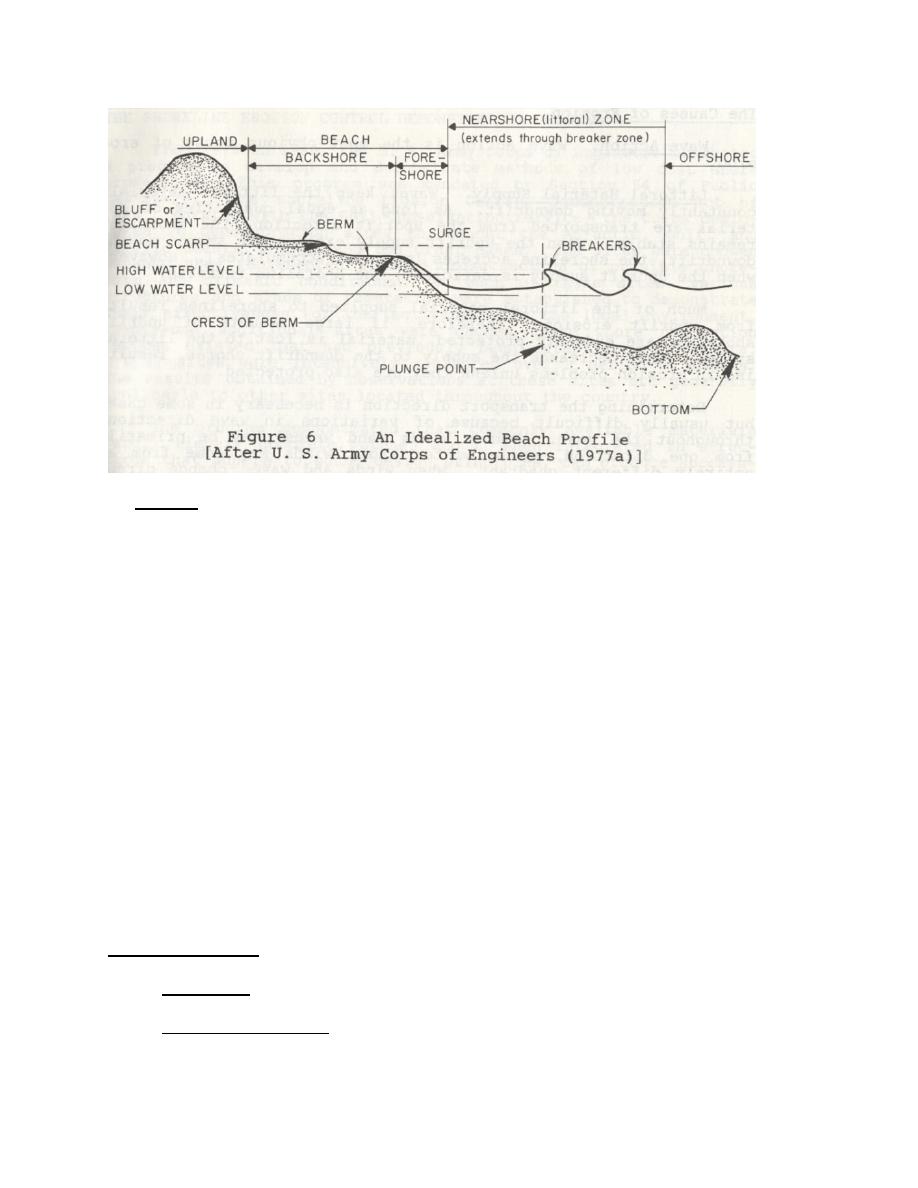
Wetlands. Wetlands usually occur in combination with sand beaches or low erodible plains.
Construction in a wetland will generally require a federal, state, and possibly, a local permit.
(These will be described later.) Under federal regulations, wetlands are defined as:
Those areas that are inundated or saturated by surface or groundwater at a frequency and
duration sufficient to support, and that under normal circumstances do support, a prevalence
of vegetation typically adapted for life in saturated soil conditions. Wetlands generally
include swamps, marshes, bogs, and similar areas" [U. S. Army Corps of Engineers (1977b).
Marsh plants are primarily herbaceous (lacking woody stems), such as grasses, sedges, and rushes.
The species present depend on location and whether the marsh is low (regularly flooded) or high
(irregularly flooded).
Until recently, wetlands were regularly drained and filled for new development or agriculture.
They are now recognized as a vital link in the food chain of the aquatic community and for their
capacity to absorb water-borne pollutants. However, more importantly, they provide shore protection
by absorbing energy of approaching waves and trapping sediment carried along by currents.
The shore protection qualities of wetlands are particularly important when they provide a buffer
zone in front of a sandy beach or other area vulnerable to erosion. While not providing full
protection, they effectively diminish wave energy and allow for less massive and costly backup
protection.
The Causes of Erosion
Wave Action. Wave action is the most obvious cause of erosion.
Littoral Material Supply. Waves keep the littoral materials constantly moving downdrift. As
long as equal quantities of material are transported from the updrift direction, the shoreline remains
14



 Previous Page
Previous Page
